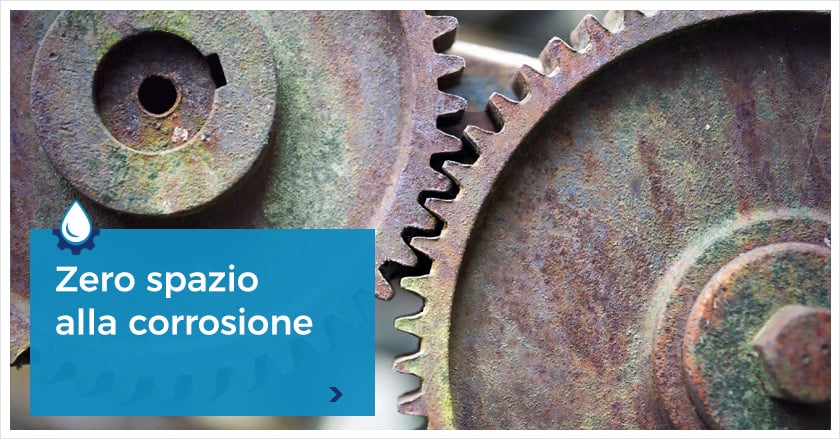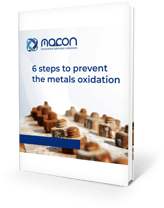
No room for corrosion
Creep corrosion is a form of localised corrosion, which occurs in most cases near the coupling between two mechanical parts, in environments with high levels of humidity.
In practice, interstices are created in these coupling areas for reasons of dimensional tolerances, sufficient to trigger a mechanism capable of creating craters and caves in the components.
In general, we can say that almost all machines found in very humid environments and which involve the coupling of two mechanical parts can be subject to crevice corrosion, so you can understand the importance of preventing this phenomenon and the extent that it can to have.
There are cases where it is more likely for this phenomenon to occur, such as:
- At the junction points of the metal parts
- Between the metal parts and a non-conducting body, as is the case with gaskets for example
- In the parts shielded from a foreign body that depends on the geographical atmospheric context, such as sand, dust, soot and so on
What factors stimulate crevice corrosion?
There are three main factors affecting the creation and propagation of crevice corrosion.
The first is the temperature which, by increasing, favours the formation of corrosive agents and their diffusion, since a complicated exchange of heat produces easy ignition points. In fact, in heat exchangers, the calcareous deposits overheat the component to the point of favouring the spread of crevice corrosion.
The second factor is conductivity, which determines the size of the pits that are created through a directly-proportional relationship: the higher the conductivity, the larger the dimensions of the pits near the interstices.
Finally, we have the agitation of the solution, the role of which changes according to the corrosion conditions and the shape of the interstice. In the latter case, the agitation favours the diffusion of oxygen inside the interstitium, whilst the stirring mechanism helps to resist corrosion, instead of facilitating its spread.
How to prevent crevice corrosion
As we have seen, crevice corrosion is present in those metal objects in which there are spaces where the passage of gaseous or liquid fluids is hindered.
It doesn't take a genius to understand that the main way to prevent this phenomenon is at its root and in its design, since producing an instrument without such spaces means lowering the chances of corrosion to almost zero.
In addition to the design, if you are already facing this problem, it is very important to keep the welds and interstices as clean as possible, so that there is no time for large quantities of external agents to settle and create deep encrustations.
In order for this to happen, in addition to frequent and careful checks, you can use lubricating components specifically designed to combat crevice corrosion and allow gas and liquids to circulate continuously inside the cavities.
But there's also another way ... If you truly care about your machinery and its health, contact professionals and request a lubricant product specially created for your needs and the characteristics of your installations and the context in which they operate. In this way, you will avoid destroying your project with the wrong lubricant.
To understand which product to choose to defend your machinery from crevice corrosion, download our free guide on how to prevent the oxidation of metals!
Protective lubricating fluids
Complete guide to anti-rust design

6 fundamental measures to prevent the oxidation of metals



